In a gravitational force field a particle is taken from A to B along different paths as shown in figure. Then
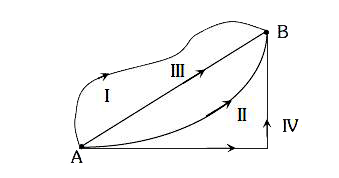
Work done along path I will be maximum
Work done along path III will be minimum
Work done along path IV will be minimum
Work done along all the paths will be the same
The correct Answer is:D
Gravitational field is a conservative field. Therefore work done in moving a particle from A to B is independent of path chosen.
Topper's Solved these Questions
- WORK, ENERGY POWER AND COLLISIONBOOK - ERRORLESSCHAPTER - WORK, ENERGY POWER AND COLLISIONEXERCISE - NCERT BASED QUESTIONS (Conservation of Energy and Momentum)
64 Videos
- WORK, ENERGY POWER AND COLLISIONBOOK - ERRORLESSCHAPTER - WORK, ENERGY POWER AND COLLISIONEXERCISE - NCERT BASED QUESTIONS (Power)
18 Videos
- WORK, ENERGY POWER AND COLLISIONBOOK - ERRORLESSCHAPTER - WORK, ENERGY POWER AND COLLISIONEXERCISE - ASSERTION & REASON
22 Videos
- WAVES AND SOUND BOOK - ERRORLESSCHAPTER - WAVES AND SOUND EXERCISE - ASSERTION & REASON
25 Videos
Similar Questions
The work done in moving a particle in the gravitational field of earth from point A to point B along three different paths 1,2 and 3 are W1,W2 and W3 respectively , then
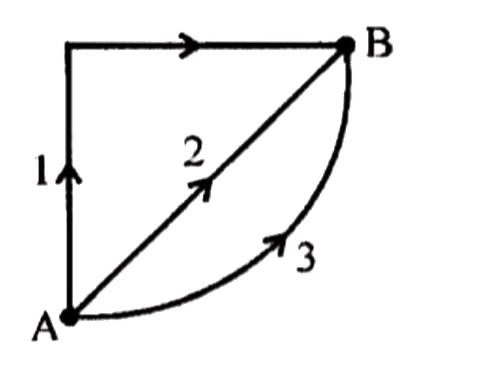
View SolutionOne mole of an ideal diatomic gas undergoes a transition from A to B along a path AB as shown in the figure

The change to internal energy of the gas during the transition is
View Solution
Knowledge Check
A gravitational field is present in a region. A point mass is shifted from A to B, along different paths shown in the figure. If W1,W2 and W3 represent the work done by gravitational force for respective paths, then
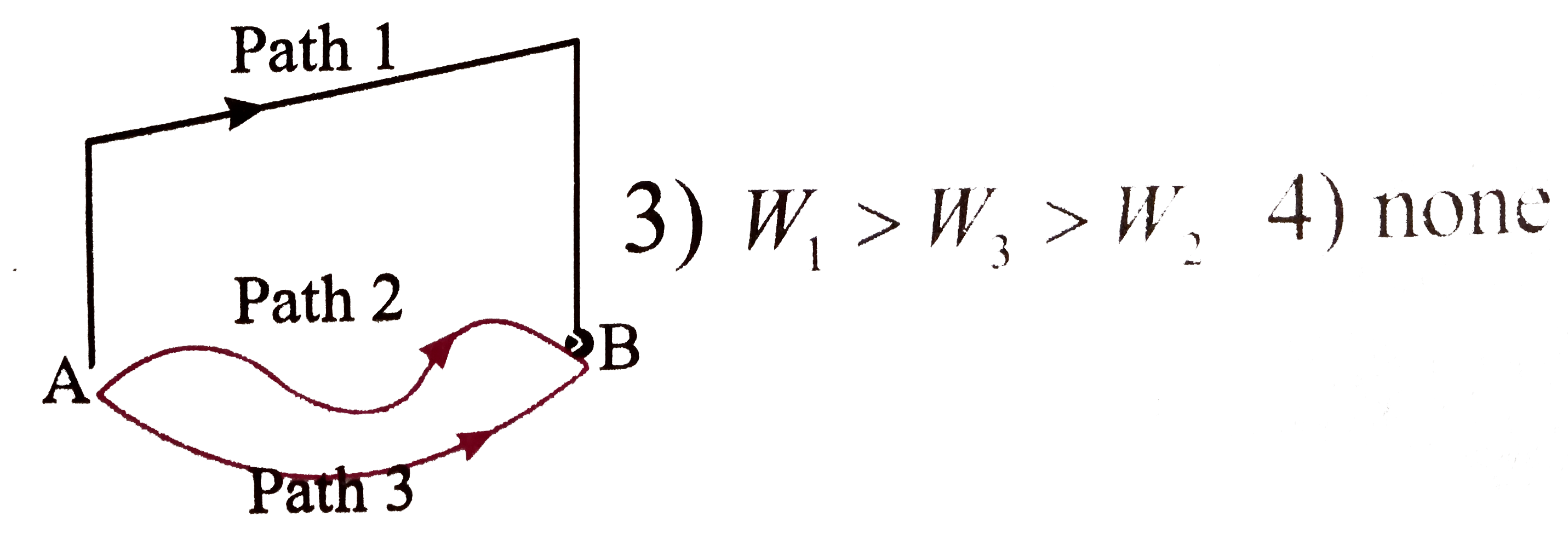 AW1=W2=W3BW1>W2>W3CW1>W3>W2Dnone ot these
AW1=W2=W3BW1>W2>W3CW1>W3>W2Dnone ot theseA block is raised from position A to B by taking two different paths as shown in the figure. If AB = h, then
 Athe work done on the block is greater in case of path 1 than in case of path 2Bthe work done on the block is greater in case of path 2 than in case of path 1Cthe work done on the block is same for both pathsDthe work done cannot be determined.
Athe work done on the block is greater in case of path 1 than in case of path 2Bthe work done on the block is greater in case of path 2 than in case of path 1Cthe work done on the block is same for both pathsDthe work done cannot be determined.A particle of mass m moves from A to C under the action of force →F=2xyˆi+y2ˆj , along different paths as shown in figure.
 AForce is conservative in natureBWork done by force is 13 when particle moves along path ABCCForce is non conservative in nature and work done along path AC is 1 JDWork done along path ADC is 145J
AForce is conservative in natureBWork done by force is 13 when particle moves along path ABCCForce is non conservative in nature and work done along path AC is 1 JDWork done along path ADC is 145J
A particle of mass m moves from A to C under the action of force →F=2xyˆi+y2ˆj , along different paths as shown in figure.

View SolutionThree particles P, Q and R
are situated at point A on the circular path of radius 10m. All three particles move along different path and reach at point B shown in figure. Then the ratio of distance traversed by particle P and Q is:-
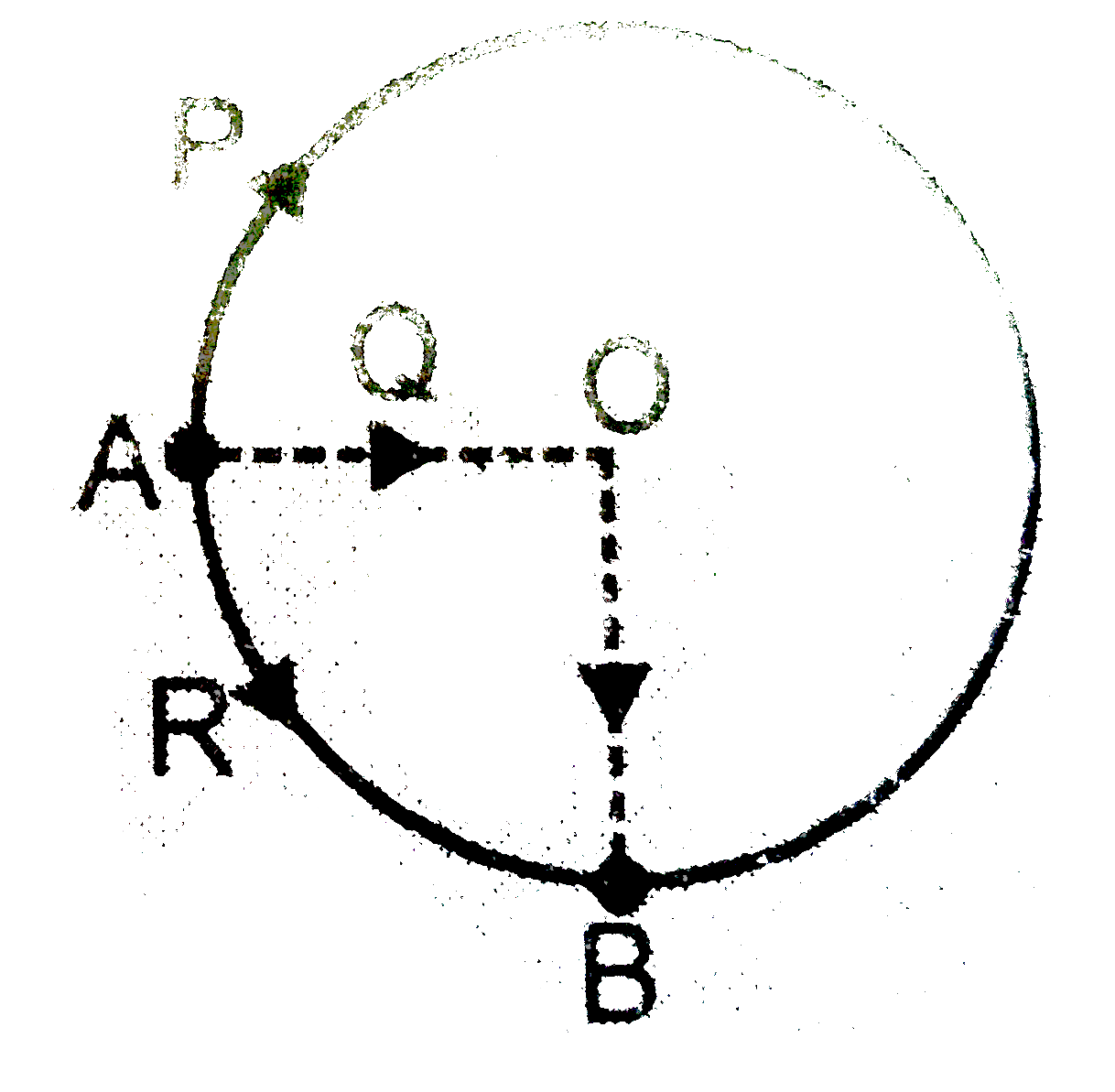
View SolutionThe acceleration of a particle starting from rest and travelling along a straight line is shown in figure. The maximum speed of the particle is
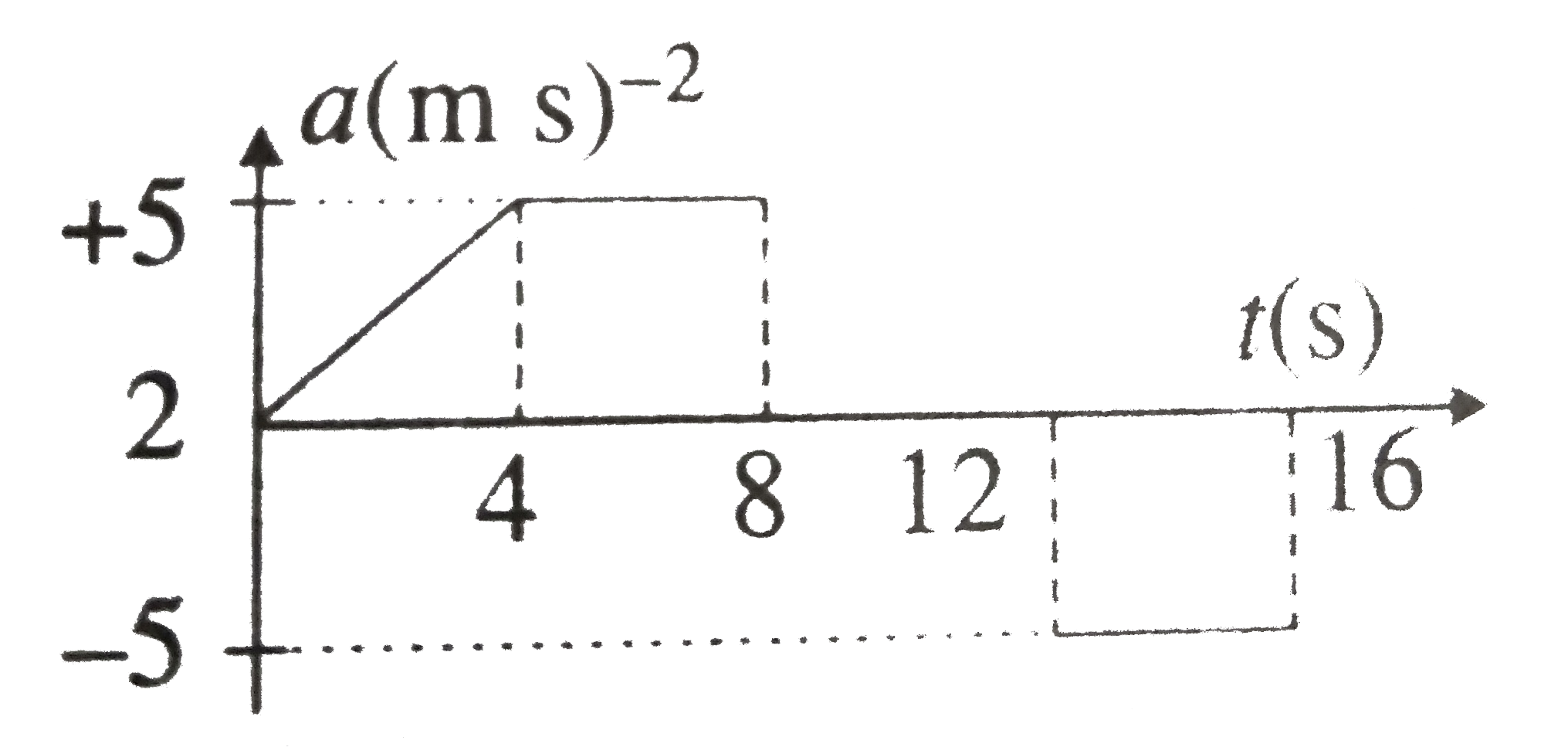
View SolutionOne mole of an ideal diatomic gas undergoes a transition from A to B along a path AB as shown in the figure. The change in internal energy of the gas during the transition is
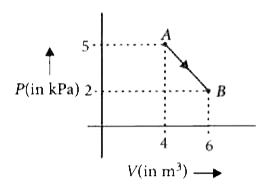
View SolutionAn ideal gas is taken from state A to state B following three different paths as shown in P-V diagram. Which one of the following is true ?
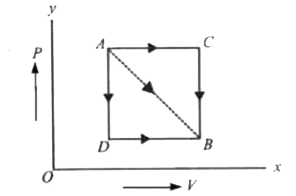
View Solution
